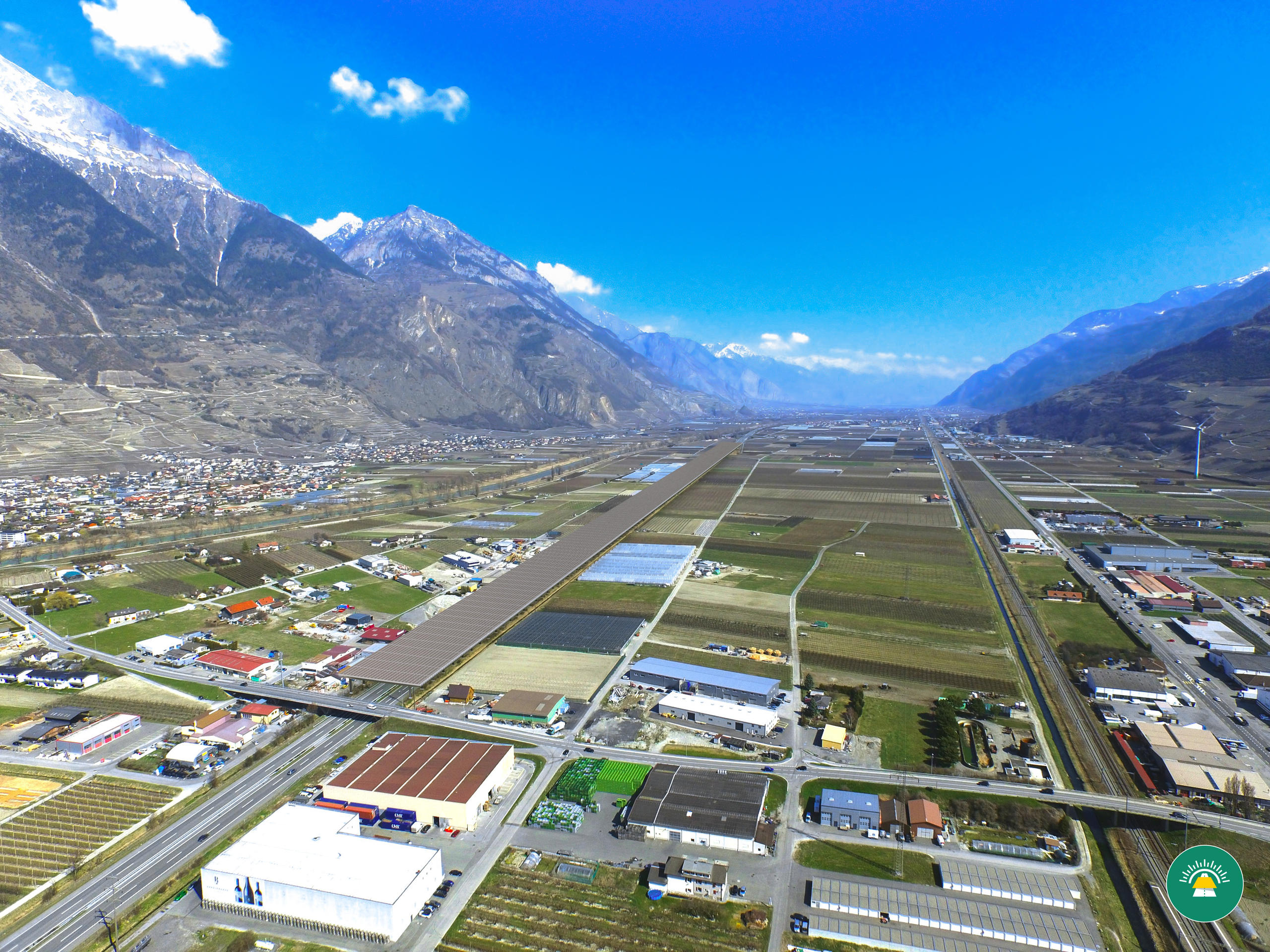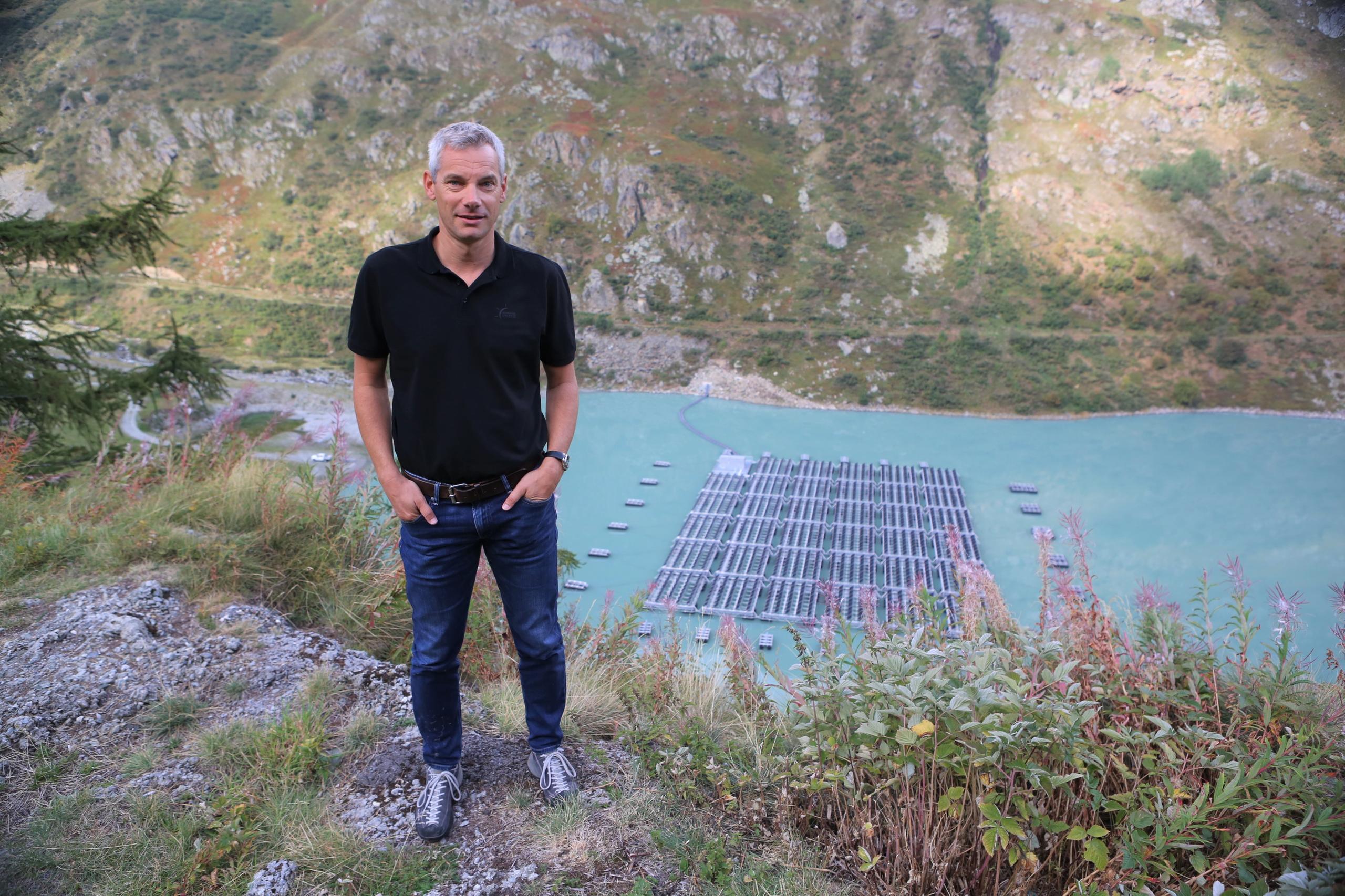
Five unusual places to install solar panels in Switzerland

Solar energy is essential to achieving a zero-emission society, but it requires enough space for solar panels. From rails to lakes, here are some of the most curious and promising places to gather solar energy, according to the Swiss.
Switzerland wants to dramatically increase its solar energy production. By 2050, photovoltaics and other renewable sources will have to meet 60% of the country’s electricity needs. Last year, Switzerland produced 7.5% of its electricity from the sun, according to the Swiss Federal Office of Energy. It’s a higher share than the global average, but lower than in European countries such as Germany, Italy or Austria.
To reach its goal, Switzerland will have to quadruple its current capacity for solar installations, according to a recent reportExternal link.
Roofs and building façades are the most suitable places to produce solar energy, with potential to produce more than ten times more electricity than today.
But some projects are targeting panel installation on more unusual surfaces – plans that have sparked interest abroad as well as controversy at home.
These are some of the most unique and promising Swiss ideas.
1. Along railway tracks

Why not do something with the unused space between Switzerland’s 5,300 kilometres of railway tracks? Joseph Scuderi, founder of the startup Sun-Ways, asked himself this question a few years ago. The idea came to fruition in April, with the inauguration of a removable solar power plant along a stretch of railway tracks in Buttes, in western Switzerland. It is the first facility of its kind in the world.
The solar panels are placed between the rails and can be easily removed for maintenance. A three-year pilot project will assess whether and how solar power generation interferes with train operations, and vice versa.
Sun-Ways estimates that solar panels could be placed on half of the railway lines in the world. In Switzerland, they could cover 2% of national electricity consumption.
The Swiss innovation is attracting interest from companies in South Korea, Japan and other countries. Here’s how it works:

More
Switzerland turns train tracks into solar power plants
Sun-Ways is not alone in wanting to integrate solar power into rail infrastructure. Bankset EnergyExternal link, which has a main office in Geneva, has designed panels to be placed directly and permanently on sleepers.
The company says it has developed prototypes in collaboration with national rail companies in France and Germany and with Switzerland’s Schweizerische Südostbahn. It carried out its first tests a decade ago on a railway line in canton Schwyz.
The technology is currently in the “proof of concept” phase, Marc Isoti, director of Bankset Energy, tells SWI swissinfo.ch. “Now it’s up to the political world and the companies operating the railway lines to decide whether and how to proceed with these solar power generation systems.”
2. On mountaintops

Switzerland wants to build large solar power plants in the Alps. Mountain photovoltaic parks have the advantage of producing electricity even during the winter, when demand is high and fog covers many solar panels in lowland regions.
Such plants already exist in some regions of China and, on a smaller scale, in the mountains of France and Austria.
Around 30 large solar power plants are currently planned in the Swiss Alps. They are part of the government’s recently extended “Solar Express” programme to promote the development of solar power in the mountains. The most advanced project is under construction near the Alpine village of Sedrun in Graubünden, at an altitude of 2,200 metres. About 300,000 square metres of solar panels are expected to produce electricity for 6,500 households.
Other projects are planned on abandoned pastures in Valais. Solar panels can also be installed on existing infrastructure such as hydroelectric dams. The solar installation on the Muttsee dam in canton Glarus, at 2,500 metres above sea level, is the highest in Europe.
Mountain solar farms are controversial, however. Environmental organisations fear they could disfigure the Alpine landscape and have negative impacts on biodiversity. The high costs also raise questions.
Recent research by the Swiss Federal Institute of Technology Lausanne (EPFL) concluded that renewable development can coexist with nature. However, preference should be given to small solar parks near areas already used for winter sports and the public has to be involved in planning.
>> Read: Renewable energy in the Swiss Alps: can climate protection coexist with nature?
3. Along motorways

Like railways, motorways also have unused spaces, such as on walls designed to protect nearby areas from noise pollution. These areas should be exploited “as quickly as possible”, say federal authorities, who speak of great potential for photovoltaic energy productionExternal link.
There are already about a dozen such installations in Switzerland, which are also present in a few other countries. Experiments include those in Italy, along the A1 Milan-Naples motorway, and in Germany, where researchers are testing a new type of barrier with integrated photovoltaics.
Some models propose placing solar modules on metal structures over motorways. Feasibility studies are underway in the Swiss cantons of Fribourg and Aargau. Similar projects are also being pursued elsewhere in Europe and the United States.
According to a recent Chinese studyExternal link, solar panels on motorway roofs could generate more than four times the electricity generated by the United States in 2023. They would also improve road safety because they would reduce rain-related accidents.
The head of Swiss start-up Energypier explained his idea of covering a stretch of motorway with solar panels in this article:

More
Can solar panels on highways accelerate the supply of green energy?
Installing solar panels along motorways is subject to strict safety regulations. Modules on noise barriers, if incorrectly oriented, risk reverberating vehicle noise instead of absorbing it. Their cost is also significantly higher than that of similar structures on the ground.
4. On agricultural land

Farms with roofs covered in solar panels are nothing new. However, there are even larger areas on which to generate electricity: farmland. Agri-photovoltaics is a renewable energy production system that combines agricultural cultivation and solar power generation.
These technologies are spreading in several countries, especially in the United States and China. The largest agro-photovoltaic installation in Europe is in the Netherlands (24,000 panels over a raspberry crop).
In Switzerland, it is forbidden to lay solar panels on large crops. However, a 2022 law allows agro-photovoltaic infrastructure to be installed on crops that need protection from the sun and hail, such as raspberries or tomatoes.
Some Swiss companies are pioneers in this area. Insolight has developed translucent solar modules that regulate light and heat on crops and in greenhouses, optimising plant growth. Some installations are already in operation in Switzerland, Italy, France and the NetherlandsExternal link.
Voltiris’s technology also turns greenhouses into solar installations. Special filters let through the part of the light spectrum useful to plants and reflect the rest back to the solar panels.
Solar panels on 1% of Switzerland’s total agricultural area could provide 10% of national electricity consumption in 2050, estimates Mareike Jäger of the Zurich University of Applied Sciences (ZHAW), coordinator of a study on photovoltaics in Swiss agricultureExternal link.
Another recent Swiss studyExternal link stresses the need for experiments on larger areas. Photovoltaic production must not, however, compromise the potential of agricultural areas for food production, which are already rare and limited, warns the Swiss Farmers’ Union.
5. On lakes

The small Lake des Toules in the Valais Alps came under the international spotlight in 2019. On the reservoir at an altitude of 1,810 metres in the territory of Bourg-St-Pierre, the world’s first high-altitude floating solar power plant went into operation.
The 1,400 solar panels are resistant to ice and snow. Although in the first three years the plant produced less electricity than expectedExternal link, the floating plant will be expanded by 2030. For now, it is the only solar power plant of its kind in the Alps.
Currently, there are more than 100 floating power plants in operation around the world. The sector is growing especially in China, India and Indonesia, according to a recent reportExternal link.
The panels can be placed on all waterways, from industrial reservoirs (disused mines) to the seas. They have the advantage of not taking land away from agriculture or construction.
In Switzerland, the greatest potential is on lowland reservoirsExternal link, according to the government. However, their implementation may be difficult because of the use of lakes for navigation, recreation and other purposes.
This article was amended on 18th of June 2025 to reflect the fact that Bankset Energy has a main office in Geneva but is not on the official register of Swiss companies; and that claims of Bankset’s work with state railways in France come from the company itself.
What is your opinion? Join the debate:

More
In the Swiss Alps, solar power takes to the water
Edited by Veronica DeVore/ts

In compliance with the JTI standards
More: SWI swissinfo.ch certified by the Journalism Trust Initiative





























You can find an overview of ongoing debates with our journalists here . Please join us!
If you want to start a conversation about a topic raised in this article or want to report factual errors, email us at english@swissinfo.ch.